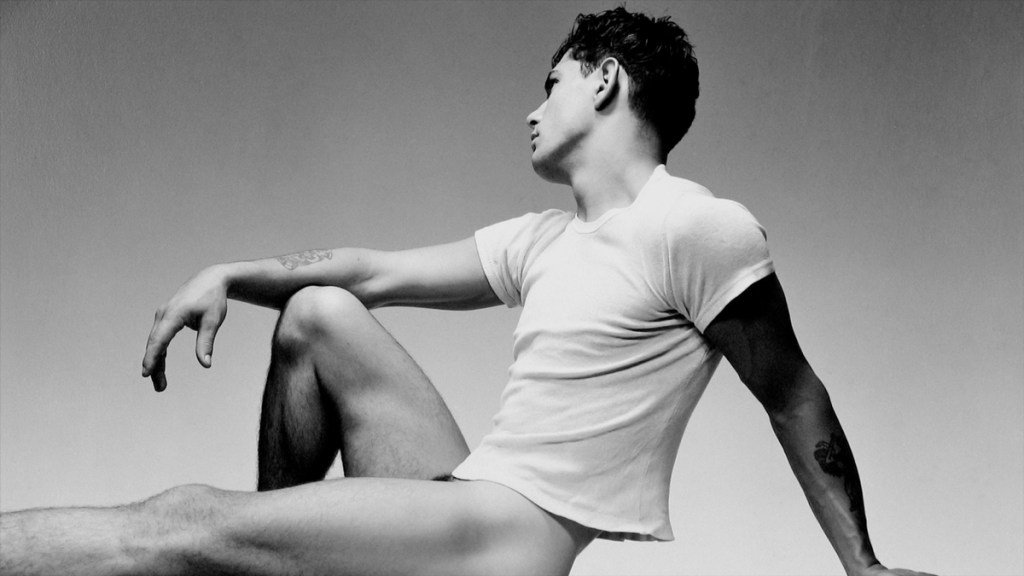A version of this essay originally appeared in Reframed, the Art in America newsletter about art that surprises us and works that get us worked up. Sign up here to receive it every Thursday.
It’s tempting to say that photographer George Platt Lynes was ahead of his time. Between the 1930s and his untimely death at age 48, he produced a body of work—elegant fashion photography, sleek images of nude men—that feel fresh today. But Hidden Master: The Legacy of George Platt Lynes, a recently released documentary by Sam Shahid, argues that, in fact, Lynes was very much of his time. The ’30s and ’40s in New York saw a bustling scene of gay men who threw fabulous cocktail parties, created art, and, of course, had sex with each other. Hidden Master is quick to remind viewers that plenty of gay men were out in their own way, decades before Stonewall. At the center of this milieu, which is largely understudied, was Lynes. “We see this world that’s gone… through George’s eyes,” says Steven Haas, an art historian and the director of Lynes’s foundation, at the beginning of the documentary.
Toward the end of Hidden Master, Shahid asks several interviewees—including Vince Aletti, Nick Mauss, Mary Panzar, and Bruce Weber—why Lynes isn’t part of the canon. The resounding answer seems to be that they don’t know. It is surprising that Lynes’s images aren’t as prominent as those of his artistic successors like Andy Warhol or Robert Mapplethorpe. But then again, many of Lynes’s best works went unshown during his lifetime: when he was creating his male nudes, it would have been taboo, if not illegal, to exhibit them. What he did show, in magazines like Harper’s Bazaar and Vogue, was his fashion photography: dreamy images of women in the latest couture. His innovations in that genre include an early form of the now-ubiquitous ring light, which are reflected in his models’ eyes.

An untitled male nude by George Platt Lynes.
Courtesy A Precious Few LLC
Though Lynes wasn’t publicly showing his nudes, he wasn’t exactly in the closet either. His nephew, George Platt Lynes II, says he was one of those people who never needed to come out; his minister father and high society mother did not disown him. In the 1920s, he traveled to Paris and befriended Gertrude Stein and her circle; Stein would eventually appoint him as her official photographer. During one steamship voyage across the Atlantic, he met Julien Levy, who exhibited his work. Through Stein, he met Glenway Wescott and Monroe Wheeler; they would essentially form a throuple for three decades. (Their circle included another famous throuple, artists Paul Cadmus, Jared French, and Margaret French, who often collaborated as PaJaMa.) The three lived together on the Upper East Side, at times attempting to pass for roommates. At the height of his fame, Lynes would befriend Lincoln Kirstein, the founder of the New York City Ballet, who also made Lynes the company’s official photographer. Through it all, Lynes made his nudes, gently convincing men—athletes, dancers, sailors, lovers—to disrobe before his camera.
A lover’s death in World War II, the throuple’s dissolution, and another bad breakup led Lynes to move to Hollywood for two years, where he worked for Vogue; there, he lived beyond his means and quickly derailed his career. When he returned to New York in 1948, he had been supplanted in the fashion magazines by Irving Penn and Richard Avedon, who had rented out Lynes’s former studio. (Lynes did not mince words about Penn and Avedon, whose work he called “spinsterish” and “the all-time low in formula-dreariness,” respectively.) He declared bankruptcy at least twice. Much of his equipment was repossessed by the IRS (his brother bought it back then loaned it to him), and he used a Picasso as collateral for another loan.

George Platt Lynes working in his studio.
Courtesy A Precious Few LLC
Lynes destroyed much of his early work and entrusted the rest to sexologist Alfred Kinsey and painter Bernard Perlin. They live on in various archives, and much of it still has not been exhibited. As dealer Peter Hay Halpert points out, they have been regulated back to the closet. Perhaps they will find new life once again.






